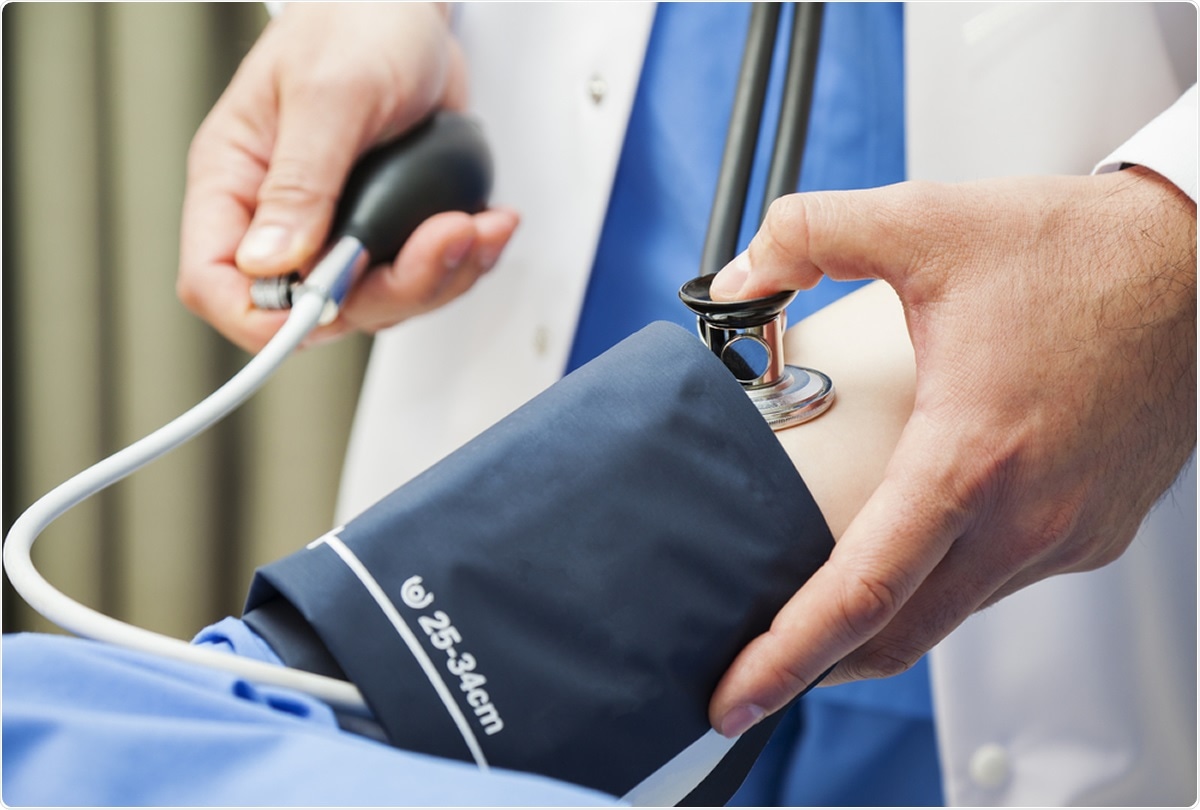A new study has revealed that uncontrolled blood pressure among Americans is on the rise compared to a few years back. The study by the researchers from the University of Alabama at Birmingham was published this week on the JAMA Network.
Blood pressure control
High blood pressure or hypertension is known to be a silent killer, with many individuals unaware of their high blood pressure until they develop complications. According to the Centers for Disease Control and Prevention (CDC), hypertension is common, and those with uncontrolled hypertension may also be at a greater risk of several heart conditions and stroke.
It is thus essential to maintain adequate blood pressure control using the several types of anti-hypertensive medications available. Normal blood pressure is measured at 120mm of Hg systolic and 80 mm of Hg diastolic blood pressure. Pressure above 140/90mm of Hg is considered to be high, and chronically raised blood pressure is diagnosed as hypertension. Systolic pressure, or the upper number, is the pressure exerted by the blood flow on the walls of the arteries when the heart pumps out blood. Diastolic pressure, or the bottom number, is the pressure in the blood vessels between two heartbeats.
What was done in this study?
For this study, the team of researchers looked at data from the US National Health and Nutrition Examination Survey (NHANES) to analyze the changes in blood pressure control among American adults with hypertension between 1999 and 2018.
What was found?
The researchers looked at blood pressure control of 18,262 adults with hypertension. Blood pressure control was around 32.2 percent of the hypertensive adults in 1999-2000, they found. By 2007-2008, the proportion of hypertensive adults with good blood pressure control rose to 49 percent. In 2013 and 2014, the proportion of hypertensive adults with good BP control was 54.5 percent, and this fell to 43.4 percent in 2017-2018.
According to the American College of Cardiology and American Heart Association, blood pressure control guidelines released in 2017, hypertension is defined as pressure over 130/80 mm of Hg. This means the heart health authorities mandate a more stringent control of BP. Using this as a marker for BP control, the team noted that only 19 percent of American adults with hypertension had good BP control. The team wrote, “Despite the 2017 BP goal of <130/<90 in all adults, control of <140/<90 continued to fall in 2017–2018.”
Age groups
When age groups were studied, adults aged 40 to 59 years who were diagnosed with hypertension showed that 56.3 percent were being adequately treated for high BP in 2009–2012, and 46.6 percent were adequately treated in 2015–2018. Among hypertensive adults over 60 years of age, the BP control was adequate in 53.6 percent in 2009-2012 and 47.9 percent in 2015-2018. Systolic blood pressure (SBP) rose by 3–4 mmHg in all age groups, the team found. Overall age-adjusted data shows that controlled BP was found in 49.7 percent of those between 45 and 64 years and 37.3 percent among those over 75 years in 2009-2012. Also, controlled BP was found in 36.7 percent of those between 45 and 64 years and 36.7 percent among those over 75 years in 2015-2018.
Racial differences
BP control was poorer among non-Hispanic Black adults compared to non-Hispanic White adults, the team noted.
Implications and Conclusions
In another study, similar findings were noted. The results were presented at the virtual hypertension 2020 meeting. The authors reported that adequate BP control dropped by 11 percent between 2013–2014 and 2017–2018. Lead author, Brent M. Egan, professor, University of South Carolina School of Medicine, Greenville, South Carolina, said, “We cannot assume an improvement in blood pressure management will continue, even after 35 years of success.”
The team working on the JAMA study writes, “In the current study, a substantial percentage of adults aged 18 to 44 years with hypertension were not aware they had hypertension. Efforts are needed to ensure BP screening occurs for younger adults.” All adults over 40 and those with a risk of family history of hypertension need to have at least one BP screening annually say recommendations. This was not being done, pointed out the researchers. Thus the population is at risk of hypertension and associated complications. Surveillance and early detection of hypertension and stringent BP control using medications can reduce long term risks of complications associated with raised BP.
Lead author Paul Muntner, Professor of epidemiology and associate dean for research, School of Public Health, University of Alabama, in his statement said, “What we found was startling and concerning… We found that the strongest predictor of uncontrolled BP was not going to the doctor, which is especially relevant during this time of COVID-19, when so many people are not going to the doctor for their follow-up visits because they are afraid of being exposed to people who might be infected.”
Wow - the results of this JAMA study are VERY sobering. BP control has worsened. And I think it is probably worse during COVID. This is a wake up call!! All hands on deck!!@AmerMedicalAssn @AHAScience @JAMA_current @MuntnerPaul @DE_Anstey @nih_nhlbi https://t.co/jiRndgJUwL
— Daichi Shimbo MD (@DaichiShimbo) September 9, 2021
Know your numbers.
Study shows decline in awareness, treatment & control of #highbloodpressure
via @NIH https://t.co/QzwoqbzqI7
The trend could threaten decades of public health work against heart disease.
Out in @JAMA_current https://t.co/HWSR8TJ81phttps://t.co/PtOaxEH1UO
— Chris Hendel (@chrishendel) September 9, 2021
We are failing.
BP control rates only 44% overall, <40% for Blacks and Hispanics, <25% for uninsured. And despite local/national initiatives, BP control has gotten WORSE over time.
These are horrifying trends with all-too-predictable disparities. https://t.co/1x2soUkJH7
— D. Edmund Anstey, MD MPH (@DE_Anstey) September 9, 2021
Journal references:
- Muntner P, Hardy ST, Fine LJ, et al. Trends in Blood Pressure Control Among US Adults With Hypertension, 1999-2000 to 2017-2018. JAMA. Published online September 09, 2020. doi:10.1001/jama.2020.14545, https://jamanetwork.com/journals/jama/fullarticle/2770254
- Egan BM, Yang J, Rakotz MK, et al. Hypertension control in the U.S. 2009 to 2018: rapidly reversing years of progress. Presented at: Hypertension 2020. September 9, 2020.
